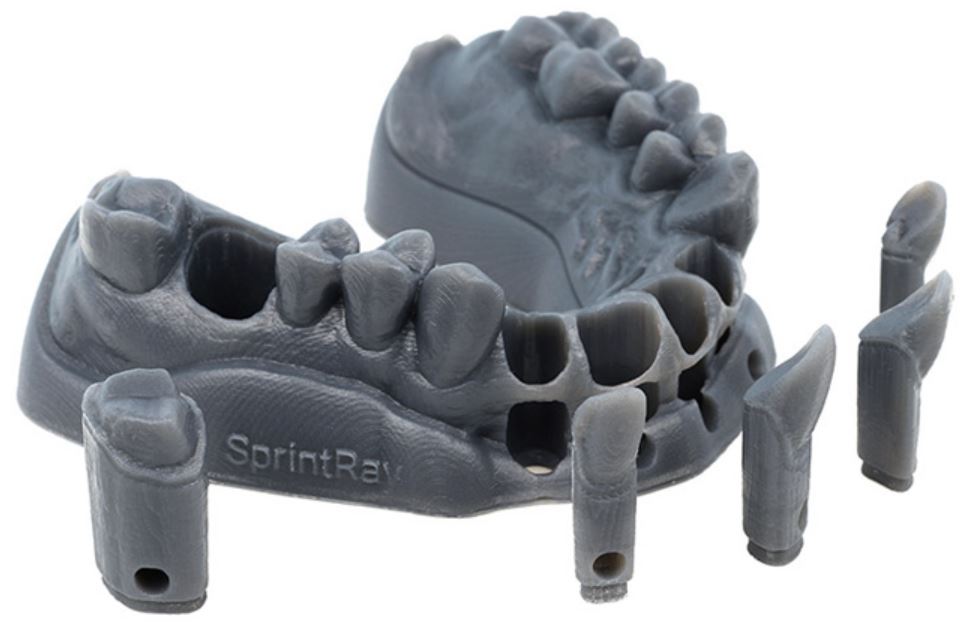
Dental 3D printing, i.e., using 3D printers to make things for dentists, is a reality today. Dental 3D printing has entered dentistry in a big way, says SprintRay.
SprintRay is a technology company, based in Los Angeles, that designs and makes 3D printers “with an emphasis on digital dentistry.” It claims that its products empower dentists to provide higher-quality and faster care to their patients.
A 3D printer makes three-dimensional solid objects using data from a digital file. The printer can produce complex shapes using significantly less material compared to traditional manufacturing methods.
There are several 3D printers that dentists can choose from today.
Dental 3D printing – a growing market
Dental 3D printing is a rapidly-growing sector. One study forecast that the market will reach $9.5 billion by 2027. The industry is today full of established manufacturers and many newcomers. Some of them make wild claims about return on investment and workflow enhancements.
For dentists, deciding which 3D printer to purchase is becoming increasingly difficult. Unfortunately, too many promoters use jargon when describing their devices’ features.
According to a SprintRay press release:
“The daily introduction of new ‘features’ into existing lineups can give the impression that 3D printing is moving too quickly to justify investment.”
“In a recent article, we made the case for what makes certain printers ‘dental’ and others not. But the printer hardware only tells part of the story.”
3rd-party manufacturers driving growth
If dentists want to cut through the noise surrounding dental 3D printing, they need to understand the current market. They also need to understand the future of dental 3D printing materials.
Printer features such as speed and accuracy matter a lot. However, the proliferation of 3D printing in dentistry is mainly due to advancements in resins. Third-party manufacturers, which make these resins, are the main drivers behind the growth.
Dental 3D printing material – what is it?
What do we mean when we talk about resin and other 3D printing technologies that we classify as ‘dental’?
SprintRay states:
“A dental 3D printing material is a resin designed and manufactured specifically for the production of final-placement dental appliances and functional dental models.”
Not every type of resin is suitable for even the most basic study models. Dental model resins represent an important part of the dental materials market. However, models represent just a fraction of what 3D printing can do in digital dentistry.

SprintRay writes:
“Functional, final-placement appliances are growing in number, and these FDA-cleared, biocompatible resins are the future of the industry.”
This SprintRay article explains in detail that there are two categories of dental resins.
Video – What is 3D Printing?
3D printing involves using a 3D printer to create 3-dimensional objects by adding layer-upon-layer. It is a type of additive manufacturing.
